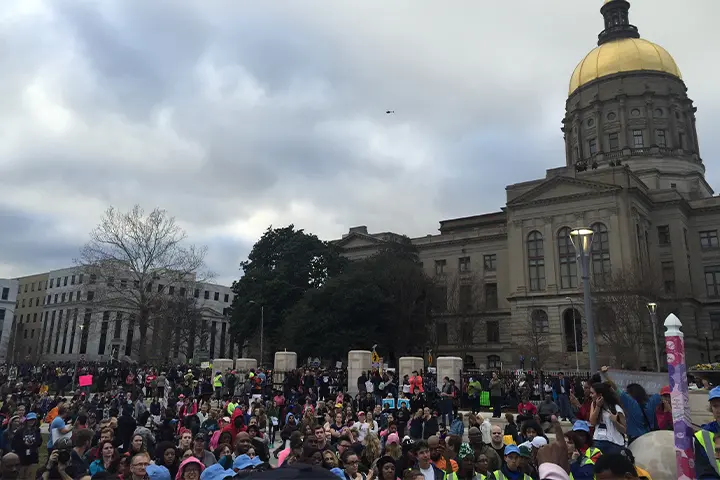Navigating the Deluge of Misinformation Surrounding Protests: A Critical Guide to Responsible Information Consumption
In the digital age, protests and social movements are often accompanied by a torrent of information, both accurate and inaccurate. Misinformation and disinformation, intentionally or unintentionally misleading content, proliferate online, obscuring the truth and potentially exacerbating tensions. As citizens engage with these complex events, it’s crucial to develop critical thinking skills to distinguish credible information from fabricated narratives. The spread of false or misleading information can significantly impact public perception, unfairly damage reputations, and undermine the legitimate concerns driving the protests. Sharing and amplifying such content, even inadvertently, can further the agendas of those seeking to sow discord and discredit the movement.
One key strategy for combating misinformation is rigorous verification. Images and videos circulating online are particularly susceptible to manipulation and misrepresentation. While compelling visuals can evoke powerful emotions, they can also be easily taken out of context, edited, or even entirely fabricated. Before sharing any visual content related to protests, investigate its origin. Conduct reverse image searches using platforms like Google Images to determine the image’s original context and any previous usage. Seek corroboration from reputable news organizations or eyewitness accounts to confirm the authenticity and accuracy of the depicted events. Established news outlets often employ sophisticated verification techniques to authenticate visual content, providing a more reliable source of information. Furthermore, resources such as First Draft’s pocket guide on video verification offer practical tools for individuals to assess the credibility of videos they encounter.
Another crucial aspect of information verification involves scrutinizing online accounts. Social media platforms and email services can be breeding grounds for fake accounts designed to spread misinformation and incite discord. Bogus accounts may masquerade as legitimate organizations, individuals, or grassroots movements, using deceptive tactics to gain credibility and manipulate public opinion. Be wary of emails from unfamiliar addresses or social media accounts with limited history, unusual activity patterns, or low engagement. Scrutinize the account’s profile, including the creation date, number of followers, and posting history. High volumes of recent activity, particularly posts that lack genuine interaction, can be indicative of automated bots or coordinated disinformation campaigns. Verify the legitimacy of organizations or movements by cross-referencing information with their official websites and social media presence.
Identifying credible news sources is paramount in combating misinformation. The proliferation of fake news websites designed to mimic legitimate news outlets poses a significant challenge. These websites often employ deceptive names and branding to create a veneer of credibility, disseminating false or misleading stories under the guise of journalistic integrity. Exercise caution when encountering unfamiliar news sources, particularly those with generic names or lacking a demonstrable track record. Verify the website’s domain name, ownership information, and editorial staff. Cross-reference information with established news organizations and fact-checking websites like PolitiFact and NewsGuard to assess the source’s credibility. Be particularly wary of articles that make unsubstantiated accusations against individuals, often identifying them as agitators or instigators. Such claims can lead to online harassment and real-world consequences for individuals wrongly accused.
The rise of misinformation underscores the importance of media literacy. Developing the ability to critically evaluate information and identify manipulative tactics is essential for responsible online engagement. Numerous resources are available to enhance media literacy skills, including guides on spotting disinformation and understanding online propaganda techniques. PEN America, for example, offers resources on identifying COVID-19 disinformation, which can be adapted to other contexts. By cultivating media literacy skills, individuals can become more discerning consumers of information, contributing to a more informed and resilient society.
In addition to verifying images, accounts, and sources, individuals can employ several other strategies to combat misinformation. One effective approach is lateral reading, which involves opening new browser tabs to investigate the source and corroborate information. This technique allows users to quickly assess the credibility of a website or social media account by checking its reputation and verifying information with other sources. Another valuable strategy is to examine the network of accounts sharing a particular piece of information. If a claim is primarily amplified by a small, interconnected group of accounts with limited engagement, it may indicate a coordinated disinformation campaign. Finally, be mindful of your own biases and emotional reactions. Misinformation often exploits strong emotions to gain traction, so it’s important to approach information with a critical mindset and avoid sharing content based solely on emotional responses.
Combating misinformation requires a collective effort. By adopting a critical approach to information consumption and utilizing readily available verification tools, individuals can contribute to a more informed and resilient online environment. Educating others about misinformation tactics and promoting media literacy skills can further empower communities to navigate the complexities of the digital landscape. Through collective vigilance and informed engagement, we can mitigate the harmful effects of misinformation and foster a more trustworthy and transparent information ecosystem.


